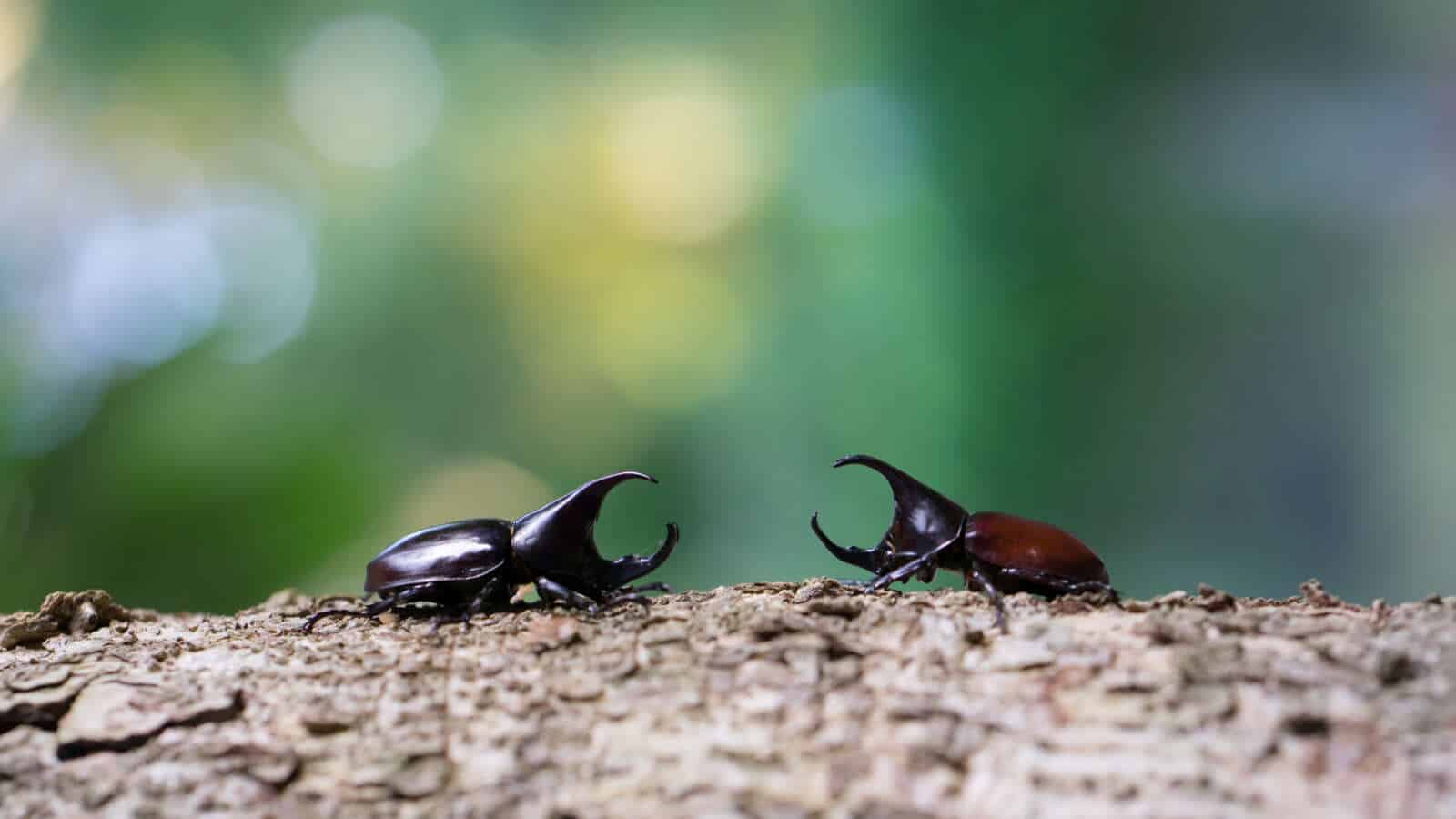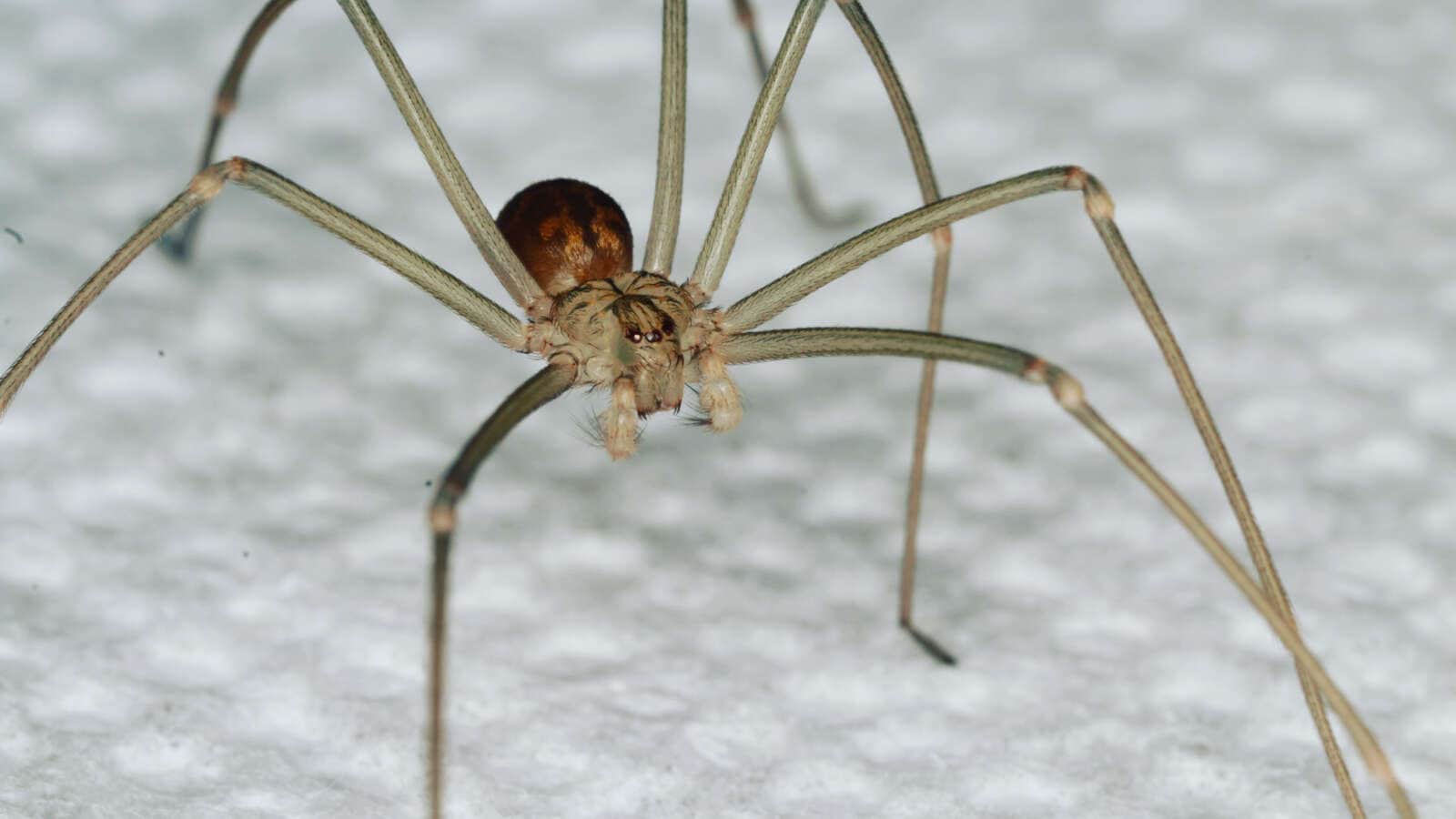6 Pressing Questions About Cicadas
In 17 states, cicadas are making their presence well-known by creating a bunch of noise and flooding yards with their exoskeletons and dead brethren. Illinois and Missouri are two of the impacted states during this emergence, so if you’re seeing a bug army in your backyard, you are not alone. This begs the question: how much longer do we have to put up with these screaming insects? Let’s explore the answer to this before we dive into the answers to 5 other cicada-themed questions.
How Long Will Cicadas Be Here?
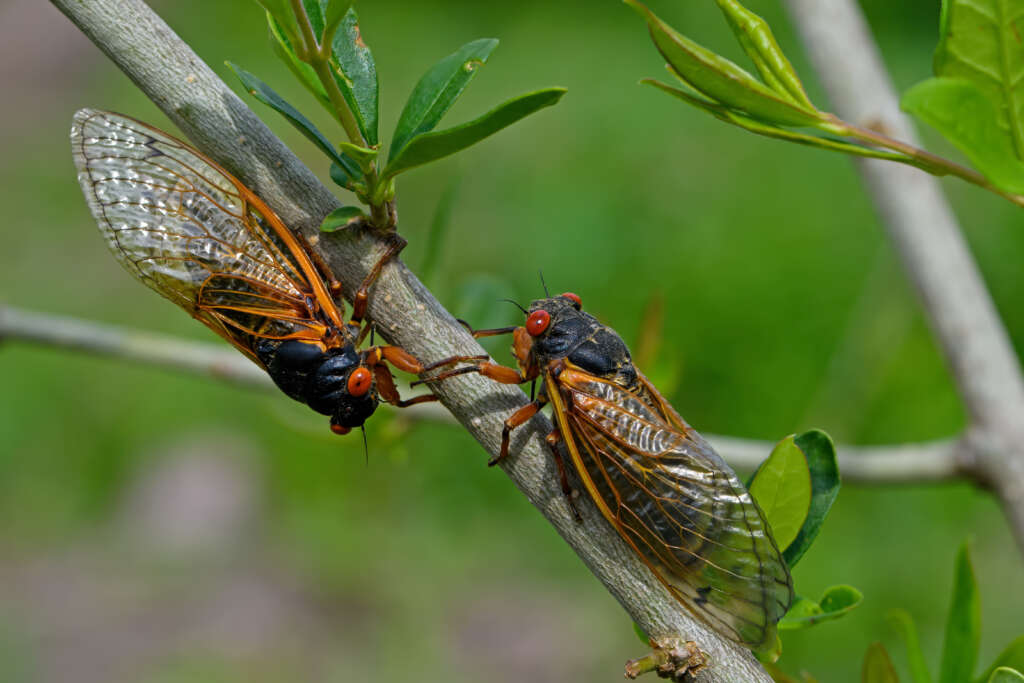
Basically, the majority of cicadas should be gone by the end of June. The amount of time that the bugs spend above-ground depends on the brood, the day they emerged, and the overall weather. They emerge from the soil when it reaches 64°, and this spring’s warm weather caused some of them to come out early. We’ll see the bugs from May through June, then see less and less as we get further into summer. They die 3 to 6 weeks after laying eggs, so they don’t have a long lifespan as adults anyway.
Both broods that emerged this year are periodicals, which means they emerge in one huge group every 13 or 17 years. The special factor of this year’s pairing is that they haven’t been together since 1803. Talk about a belated family reunion! Brood XIX, the Great Southern Brood, emerges every 13 years in the Southeastern states. Brood XIII, the Northern Illinois Brood, emerges every 17 years in the Midwestern states. Both broods can be found in states outside of their designated area, but they usually stick to their regions. Cicadas from each brood should be mostly gone by late summer.
What Is The Life Cycle Of Cicadas?
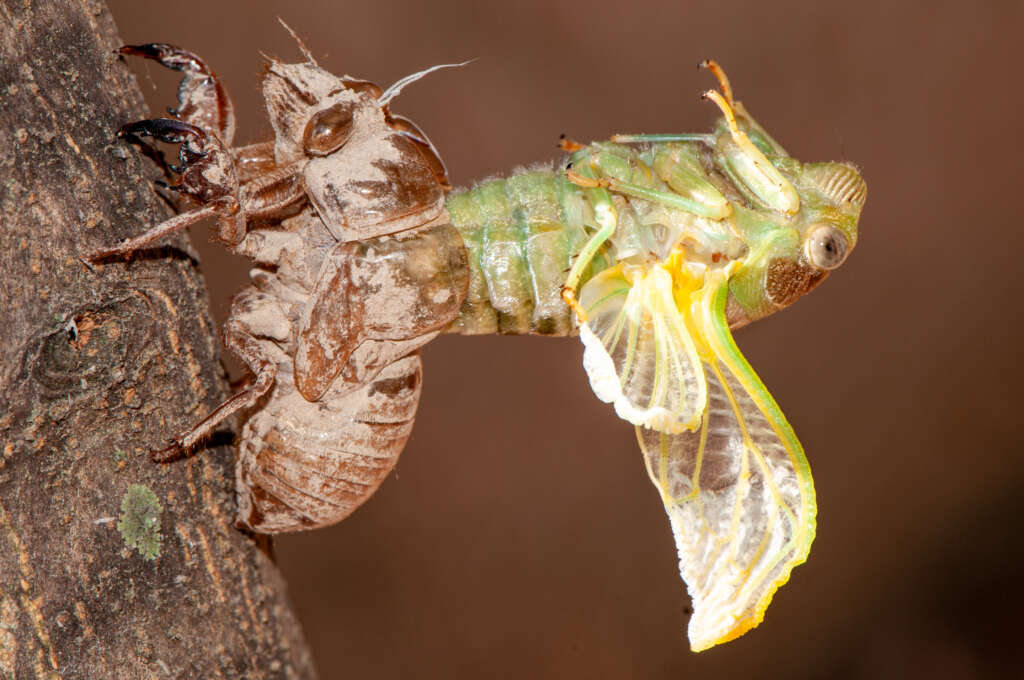
The purpose of cicadas bursting forth from the soil is to lay their eggs, which go on to have an interesting life cycle. Females lay 10 to 20 eggs in the holes of tree branches and shrubs. Those eggs hatch about 6 to 10 weeks later, then the nymphs fall from their perch (don’t worry, they’re fine) to land on the soil. They burrow about 8 inches deep, traveling towards the closest tree root as their food source.
Cicada nymphs live underground in a dormant state for anywhere from 2 to 17 years, depending on the brood. They spend over 99% of their lives underground! Once the soil is 64°, the adults emerge and fly up to a higher point on the tree to gain elevation. The adults usually live for 1 month total while they’re out of the soil. Females can lay 500 to 600 eggs in their short lifetimes, which is why we see so many every year.
What Do Cicadas Eat?
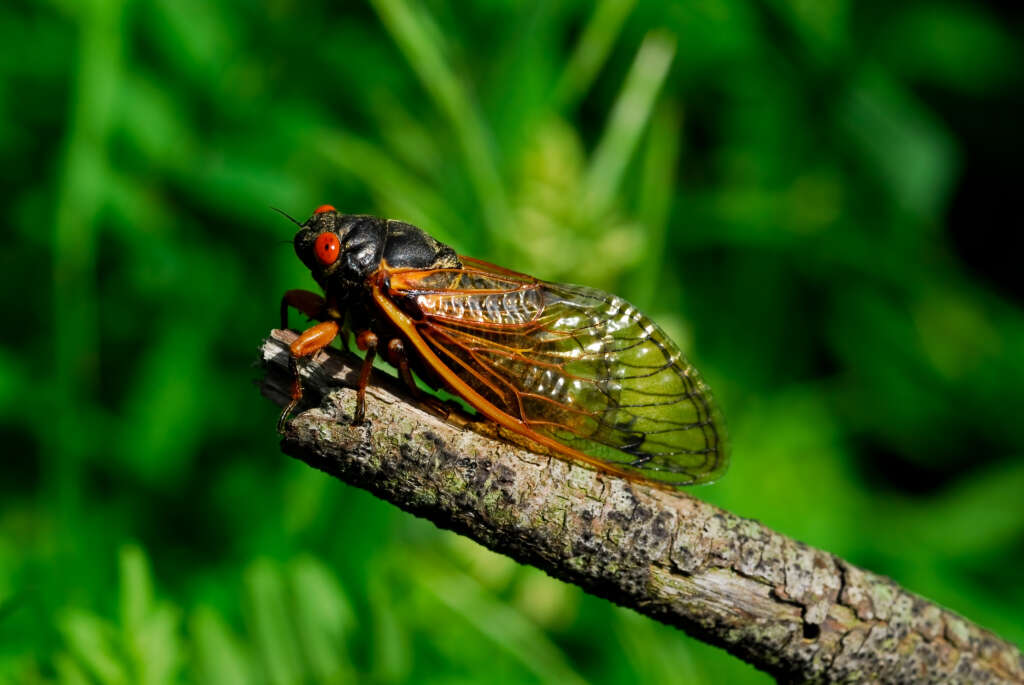
When we think of cicadas, their constant screeching and massive numbers are the main attributes that come to mind. But they do have a diet while they’re earth-side, as minimal as it may be. The adults eat a small amount of sap from the trees and shrubs they landed upon after emerging. Cicada nymphs feed on the fluid found in tree roots during their time underground.
All cicadas have needle-like mouths that help them drink the sap from whatever innocent plant they’re feeding from. The good news is that they don’t drink enough fluid to hurt the tree or shrub, so you don’t have to worry about them killing your garden. They also don’t feed on fruit, leaves, or flowers of any kind. They may be annoying, but at least these invaders aren’t the worst pests out there!
Why Are Cicadas So Loud?
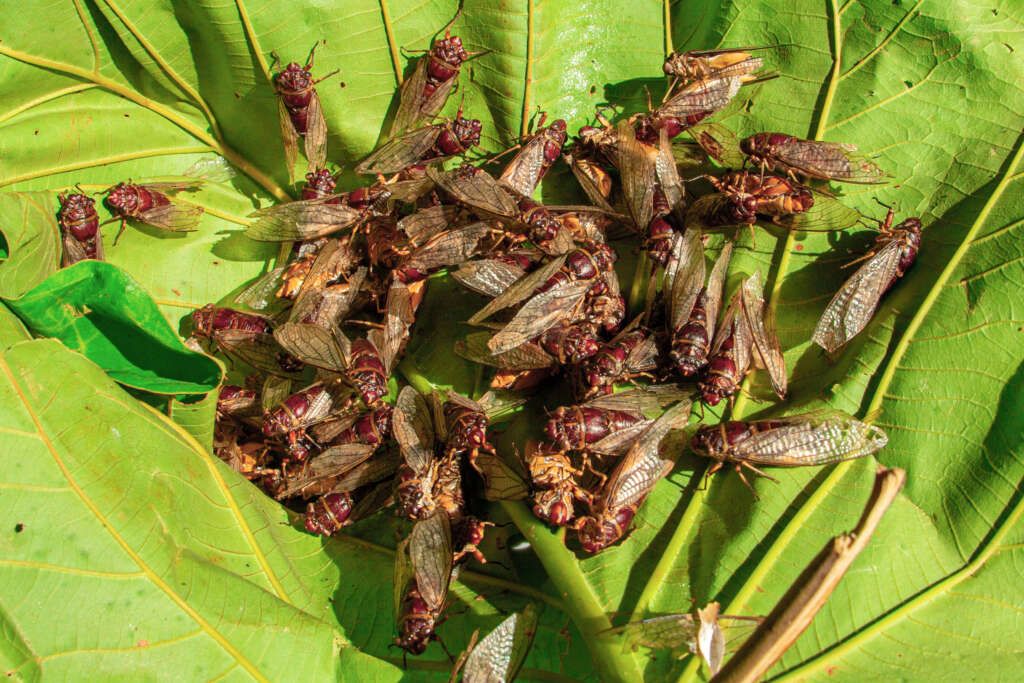
These bugs are similar to crickets in that the males are responsible for the famous calls each insect makes while active. Crickets chirp and cicadas screech to alert the females of the same species to their presence. Males start calling 4 or 5 days after emerging in order to give the females enough time to lay eggs before dying. The higher the outdoor temperature, the louder their calls.
To make their famous sound, males use their soundbox while expanding and contracting their tymbal, a membrane. If a female cicada likes what she hears, she’ll make a clicking sound with her wings to give the male a location. They emerge and stay within their huge groups throughout the mating process for protection purposes. They don’t have chemicals or strong jaws, so cicadas find their strength in numbers!
What Do Cicadas Do?

Overall, these bugs are pretty boring (no offense to them). They don’t really move or communicate as nymphs since they are in a dormant state. The adults aren’t very active either, even when the weather is warm and other insects have a ton of energy. Their main activities are mating, laying eggs, and eating a bit of sap. They also molt as they grow, which is why we find their shells everywhere.
No matter the brood, periodical cicadas have an unmistakable appearance. They are 1 to 1.5 inches long and have black bodies with bright red eyes. These bugs have wings with orange veins, but they aren’t the strongest fliers of the bunch. The only real impact they make on the plants they invade is if they cause twig dieback. This is when the cicada eggs in the tree branch tips cause the leaves to brown, but it’s usually not a major issue.
What Can Humans Do With Cicadas?
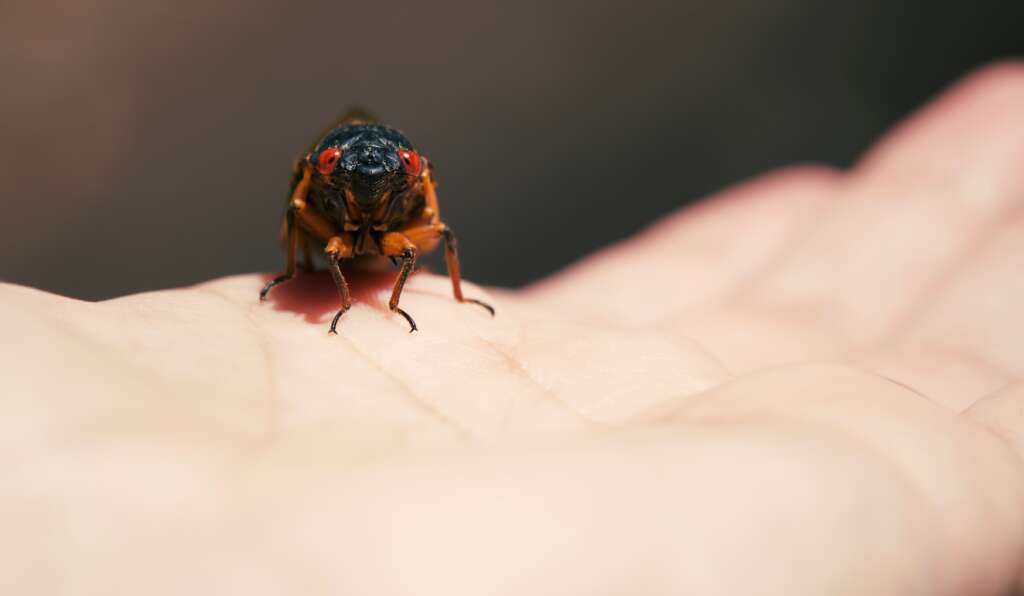
With all of the buzz (literally) surrounding cicadas, it’s natural to wonder what we can do with all of these noisy insects. They have quite a few benefits that help our ecosystem every emergence. Once they die and land on the soil, cicada bodies add nutrients to the soil, aerate the lawn, and help tree roots grow. Cicadas are reliable food sources for birds, fish, rodents, spiders, and raccoons. These insects are also a popular snack — often deep fried and seasoned — in many cultures.
Another interesting method is to incorporate them into a dish, like chef Nicole did on the recent “Will It Enchilada?” episode of the YouTube show Good Mythical Morning. This creation was made as a humorous solution to the problem of having too many cicadas. The exoskeletons were combined with pork to give an extra protein source, but it was still pretty intimidating to co-hosts Rhett and Link. Upon tasting the dish, Link wasn’t a big fan and Rhett was impressed by how “‘incredibly nutty’” the bugs tasted (Good, 12:18-12:19). The verdict? Yes, cicadas do (apparently) work in enchiladas!
On a realistic note, there are a few different things you can do with cicada exoskeletons. You can add them to your compost pile as organic waste. Their exoskeletons are also great in mulch since they add nutrients to every type of soil. You can leave dead bugs out in your yard if you want, but keep the following factors in mind. It’s not good for dogs and cats to eat a lot of cicadas (a few are fine), and cicadas start to stink when they sit out in the hot sun!
Pointe Protects Your Home From Year-Round Pests
Since they are immune to pesticides and don’t pose a threat to humans, pest control services aren’t necessary (or even offered) for cicadas. On the other hand, traditional pests are efficiently treated by the knowledgable technicians of Pointe Pest Control! Our licensed team solves all kinds of pest problems for homes and businesses alike. We address each issue with the care and attention it deserves, eliminating each infestation through a combination of thorough inspections and targeted treatments. For a free quote on our reliable pest control services, contact our dedicated team today!
Citations
Cicadas. (2024, May 13). United States EPA. Retrieved May 21, 2024, from https://www.epa.gov/safepestcontrol/cicadas
DeLetter, E. (2024, May 18). How long will cicadas be around this year? Here’s when to expect Brood XIX, XIII to die off. USA Today. Available at https://www.usatoday.com/story/news/nation/2024/05/18/how-long-will-cicadas-be-here/73731750007/ (Accessed on May 20, 2024).
Eating and researching cicadas: Biologist explains everything to know about this year’s emergence. (2024, May 3). Georgetown University. Retrieved May 21, 2024, from https://www.georgetown.edu/news/ask-a-professor-cicadas/
Good Mythical Morning. (2024, May 6). Will it enchilada? Taste test [Video]. YouTube. Retrieved May 17, 2024, from https://www.youtube.com/watch?v=sVMVd1vPtF0
Hanson, K. (2021, May 19). What parents should know about cicadas. Today. Available at https://www.today.com/parents/what-parents-should-know-about-cicadas-t218923 (Accessed on May 21, 2024).
NBC 5 Staff. (2024, May 15). How long do cicadas live? A timeline of their emergence in Illinois. NBC 5 Chicago. Available at https://www.nbcchicago.com/cicadas-illinois-chicago-2024/how-long-do-cicadas-live-a-timeline-of-their-emergence-in-illinois/3437987/ (Accessed on May 20, 2024).
Sharon, K. (2021, May 10). Want to impress your friends? Here’s 5 facts about cicadas to share at your next tailgate or barbecue. The Tenessean. Available at https://www.tennessean.com/story/news/american-south/2021/05/10/cicadas-brood-x-what-to-know/4936745001/ (Accessed on May 21, 2024).
What to do with cicada shells. (n.d.). Scotts. Retrieved May 21, 2024, from https://scotts.com/en-us/how-to/what-to-do-with-cicada-shells.html




